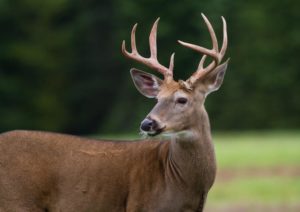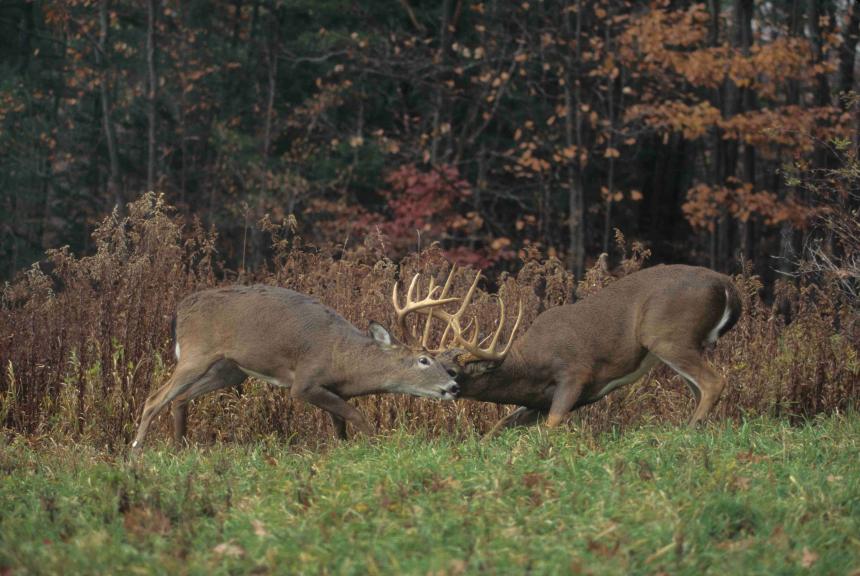The crunching sound of hooves on leaves captured my imagination. Silently sliding off the safety of my rifle, I tried to remain perfectly still. Finally, a brown form entered my perifory vision and a spike-horn buck became visible as it sneaked along. Slipping the safety back to the “on” position, I watched the deer climb a ridge, cautiously looking left and right and disappear over the rise. As the buck flicked it’s tail and moved on, I wondered where it’s antlered future would lead and how large it’s rack would grow if it avoided a hunter’s site. Could a spike become a Booner?
A Picture Book of a Buck’s Life
 Charley Alsheimer, is a leading whitetail deer photographer and uses a large New York compound to follow individual deer throughout their lifetime. This series of photos details the growth of an individual deer from it’s first spike antlers to it’s 170-inch crown. Watch as the buck’s body changes nearly as much as its rack on the road to maturity.
Charley Alsheimer, is a leading whitetail deer photographer and uses a large New York compound to follow individual deer throughout their lifetime. This series of photos details the growth of an individual deer from it’s first spike antlers to it’s 170-inch crown. Watch as the buck’s body changes nearly as much as its rack on the road to maturity.
The process of getting a whitetail from the button buck stage to the Boone and Crockett category is a mystical journey that includes a complex assortment of variables. It takes four basic ingredients to produce a buck with a 170-inch rack: genetics, habitat, herd management and age.
Too often hunters feel they can tell a buck’s potential by the kind of antlers it grows as a yearling. I’ve been fortunate to have hunted whitetails from New York to Texas to Saskatchewan, with many stops along the way. I’ve also had the unique opportunity of raising whitetails and studying their behavior for a quarter century. My journey as a hunter, photographer and researcher has taught me a few things about the whitetail. And one is that the size of a yearling’s antlers is seldom a predictor of what its antlers it will be when it fully matures.
https://www.realtree.com/deer-hunting/galleries/photo-gallery-from-buttons-to-booner



















![The Best Deer Camp Chili [VIDEO] Deer Chili Ingredients, Tomatoes, Chili Spices](/wp-content/uploads/2015/10/Deer-Chili-Deer-Camp-Recipe-218x150.jpg)
![How to Call Elk Early in the Season [VIDEO]](/wp-content/uploads/2016/08/byers003-218x150.jpg)




![Idiots Disturb Hunter: How Would You Have Handled It? [VIDEO]](/wp-content/uploads/2015/10/DSC00110-e1474487693878-100x70.jpg)
![Albino Buck Shocked to Shed His Antlers [VIDEO]](/wp-content/uploads/2015/10/AlbinoDeer-100x70.jpg)